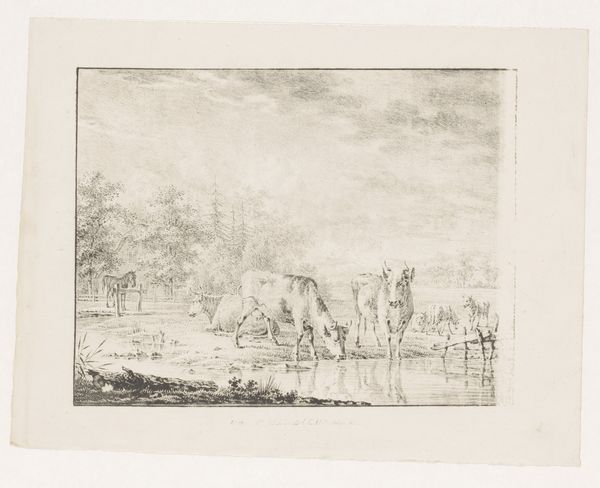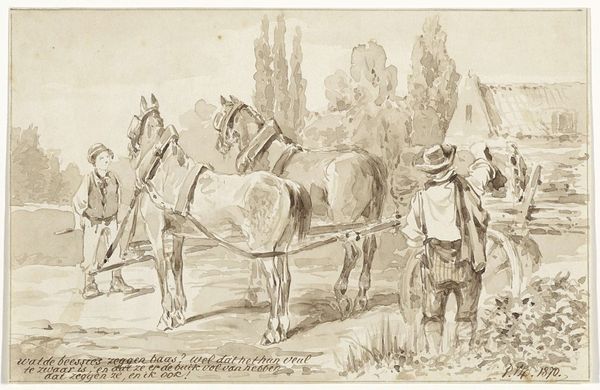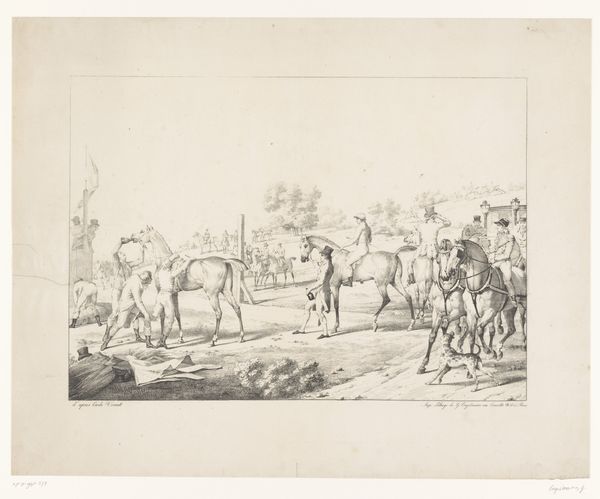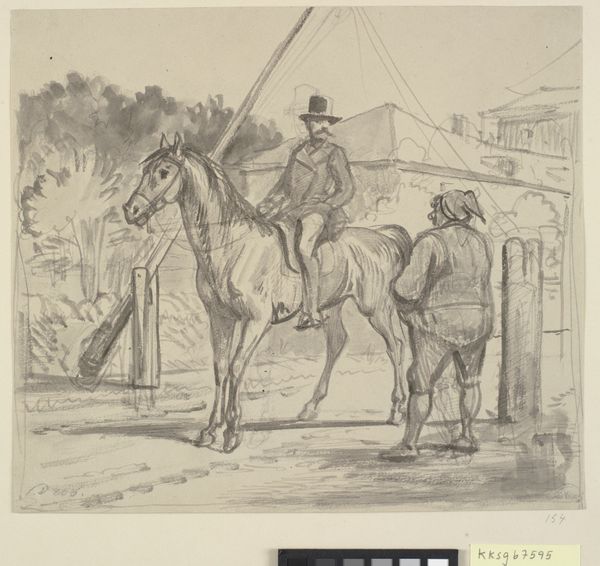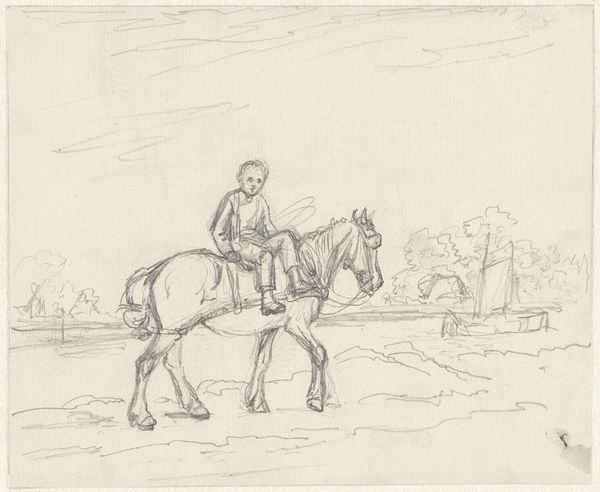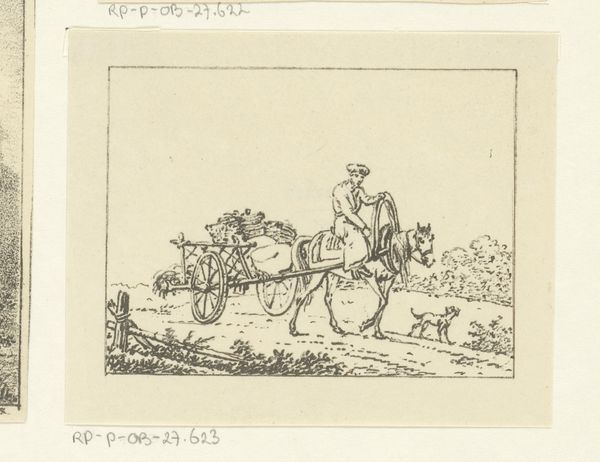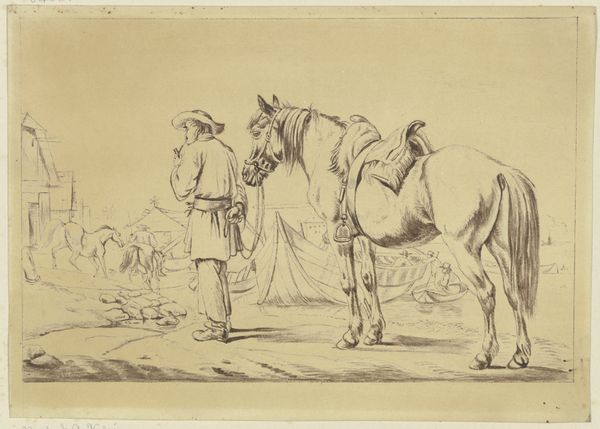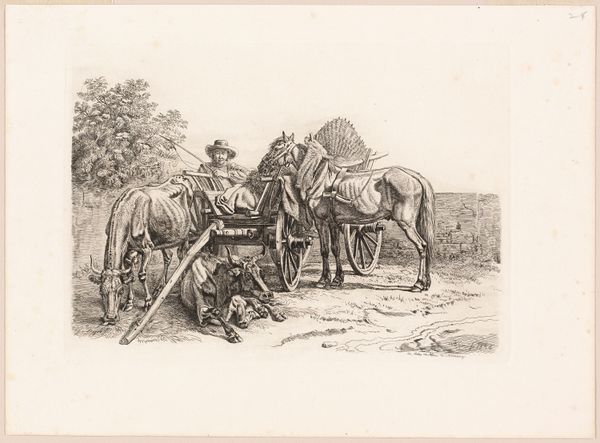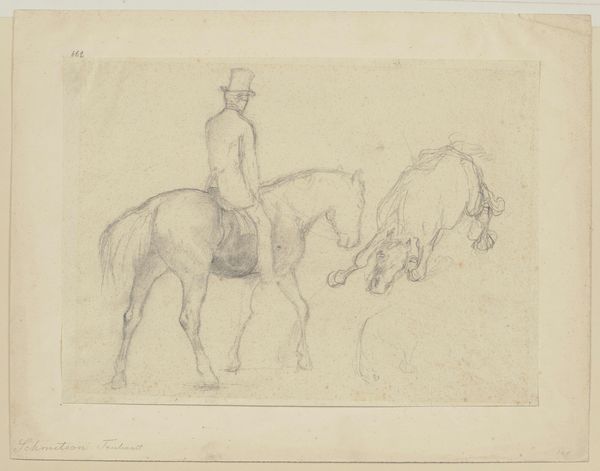
Dorpsbeeld in N.O. Indië met op de voorgrond een ruiter te paard 1848 - 1854
0:00
0:00
drawing, pencil
#
drawing
#
pencil sketch
#
landscape
#
pencil
#
realism
Dimensions: height 136 mm, width 213 mm
Copyright: Rijks Museum: Open Domain
Editor: Here we have Christian Heinrich Gottlieb Steuerwald's pencil drawing, "Dorpsbeeld in N.O. Indië met op de voorgrond een ruiter te paard," which roughly translates to "Village scene in N.E. Indies with a horse rider in the foreground," created between 1848 and 1854. The sketch gives off an intimate, documentary feel. What do you make of it? Curator: It's tempting to romanticize this kind of scene, but let's think critically. How does the depiction of the rider on horseback – likely a European colonial figure – in contrast to the village setting, contribute to a visual power dynamic? Editor: I didn’t consider the power dynamic. It feels… obvious now. I was focused on the light. Curator: Consider the context. During this period, the Dutch East Indies were under colonial rule. Steuerwald, presumably European, is not simply depicting a scene; he is framing a relationship of control. Editor: So, the pencil sketch, a medium that suggests immediacy and observation, is in fact a loaded perspective? Curator: Precisely. Notice how the figures in the background are somewhat blurred and less defined, while the rider is much sharper. What does that suggest about the artist's intended focus, and potentially, the viewer's? Editor: That he’s central to the image… maybe he's meant to be seen as central to the depicted scene. I was looking at this as just an everyday moment captured. Curator: And there’s nothing wrong with that initial reading! But remember, even seemingly objective artistic choices, like composition and medium, are shaped by the social and political realities in which the artist worked, and the audiences to which he catered. Art is rarely just a snapshot. Editor: Right. That changes everything about how I view it now. Thanks. Curator: Indeed. It always enriches our perception when we analyze visual representation through socio-historical contexts.
Comments
No comments
Be the first to comment and join the conversation on the ultimate creative platform.
